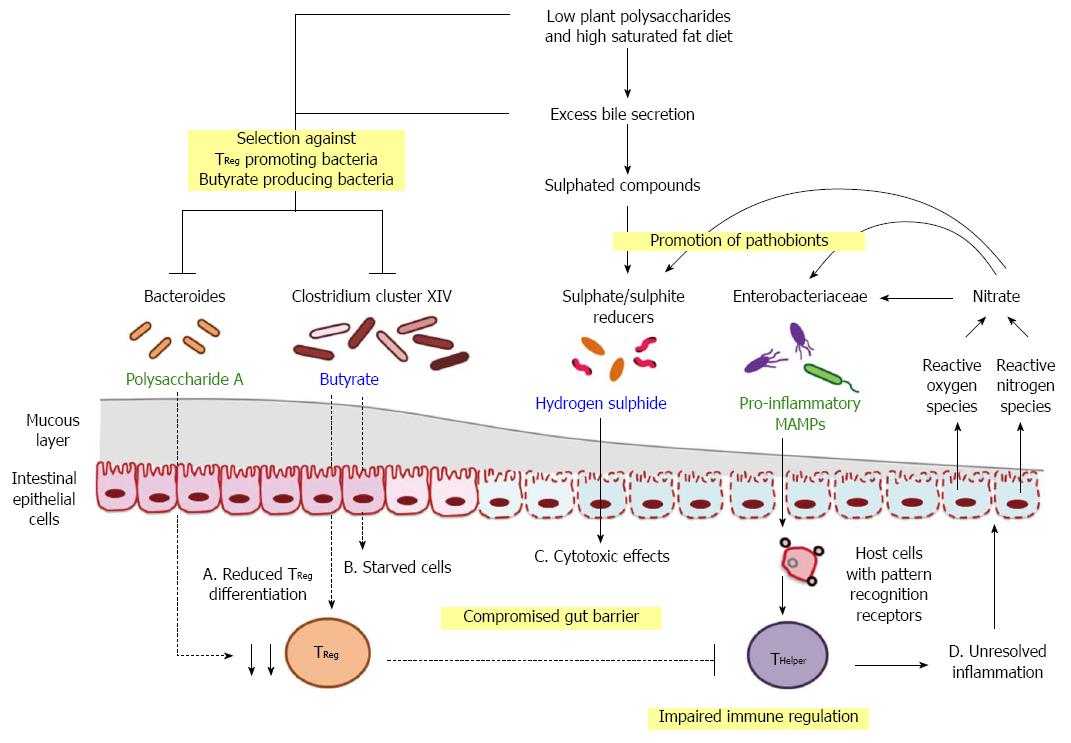Copyright
©2014 Baishideng Publishing Group Inc.
World J Gastroenterol. Nov 28, 2014; 20(44): 16498-16517
Published online Nov 28, 2014. doi: 10.3748/wjg.v20.i44.16498
Published online Nov 28, 2014. doi: 10.3748/wjg.v20.i44.16498
Figure 3 Hypothesised triggers and drivers in diet-induced dysbiosis.
Progression from homeostasis to clinical manifestation of metabolic dysfunction may emerge from shifts in microbe-associated molecular patterns (MAMPs; green) and metabolites (blue), initiated by long-term consumption of diets with reduced amount of dietary fibre but high saturated fat. A: Reduction in the availability of fermenting substrates in conjunction with excess secretion of anti-bacterial bile acids can alter the competition dynamics of commensal organisms and pathobionts. Consequent depletion of polysaccharide A and butyrate promotes immune dysfunction by altering the balance of regulatory T cells (TReg) and helper T cells (THelper); B and C: Shifts in microbial products contribute to the impairment of gut barrier function and the leakage of MAMPs; D: Dietary factors, microbial signals and host responses act in concert to drive inflammation, which provides a positive feedback pathway in favour of chronic disease development.
- Citation: Ha CW, Lam YY, Holmes AJ. Mechanistic links between gut microbial community dynamics, microbial functions and metabolic health. World J Gastroenterol 2014; 20(44): 16498-16517
- URL: https://www.wjgnet.com/1007-9327/full/v20/i44/16498.htm
- DOI: https://dx.doi.org/10.3748/wjg.v20.i44.16498









